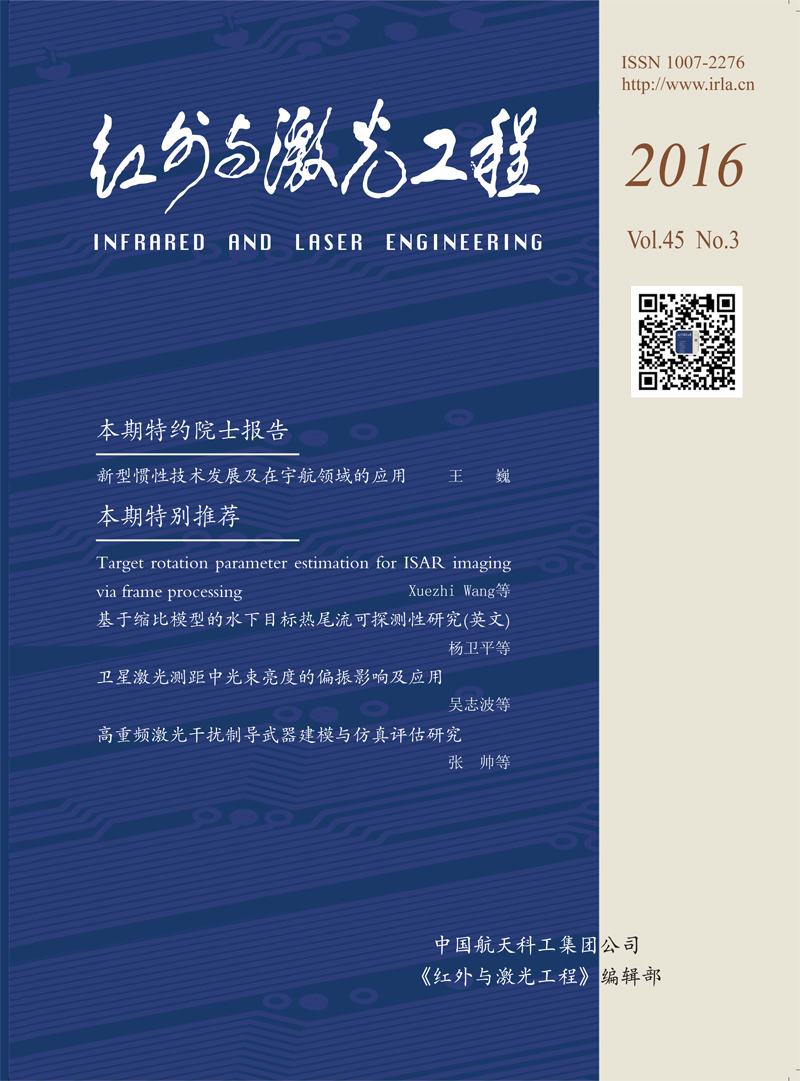Wu Zhibo, Deng Huarong, Zhang Haifeng, Tang Kai, Zhang Zhongping. Polarization effects of laser beam brightness and its application in Satellite Laser Ranging[J]. Infrared and Laser Engineering, 2016, 45(3): 306005-0306005(5). doi: 10.3788/IRLA201645.0306005
| Citation:
|
Wu Zhibo, Deng Huarong, Zhang Haifeng, Tang Kai, Zhang Zhongping. Polarization effects of laser beam brightness and its application in Satellite Laser Ranging[J]. Infrared and Laser Engineering, 2016, 45(3): 306005-0306005(5). doi: 10.3788/IRLA201645.0306005
|
Polarization effects of laser beam brightness and its application in Satellite Laser Ranging
- 1.
Shanghai Astronomical Observatory,Chinese Academy of Sciences,Shanghai 200030,China;
- 2.
Key Laboratory of Space Object and Debris Observation,Chinese Academy of Sciences,Nanjing 210008,China
- Received Date: 2015-07-14
- Rev Recd Date:
2015-08-19
- Publish Date:
2016-03-25
-
Abstract
Laser beam image generated by atmosphere backscattering has been widely used to monitor the laser pointing in Satellite Laser Ranging(SLR). The phenomenon that the brightness of beam image differs from sky sections influences the satellite aiming. Based on the SLR system of Shanghai Astronomical Observatory, Chinese Academy of Sciences, the mechanism of this phenomenon was figured out that the efficiency of splitter mirror was generally related to the polarization state of incident light. Accordingly, a new method was proposed that a half-wave plate was deployed in transmitting path, and rotating it realized the real-time control of different brightness for beam imaging. The model of outgoing laser polarization direction with the pointing of telescope was established. Compared with the use of splitter mirror whose efficiency is independent of polarization direction, the method is more flexible, simpler and less cost. The method can be applied in improving laser beam pointing accuracy in SLR and Signal-to-Noise Ratio(SNR) of star image etc.
-
References
|
[1]
|
Zhang Haifeng, Zhang Zhongping, Qin Si, et al. Experimental study on laser active illumination to space targets within the shadow of earth[J]. Chinese Journal of Lasers, 2014, 41(s1):s108003. (in Chinese) |
|
[2]
|
Zhang Zhongping, Zhang Haifeng, Wu Zhibo, et al. Experiment of laser ranging to space debris based on high power solid-state laser system at 200 Hz repetition rate[J]. Chinese Journal of Lasers, 2014, 41(s1):s108005. (in Chinese) |
|
[3]
|
Arnold D A. Cross section of ILRS satellites[C]//ILRS Technical Workshop, 2003:1-7. |
|
[4]
|
Bai Yudong. Target detection technology based on infrared polorization imaging[J]. Infrared, 2013, 34(3). (in Chinese) |
|
[5]
|
Matthew Wilkinson. Polarization at the SGF Herstmonceux[C]//17th International Workshop on Laser Ranging, 2011:1-5. |
|
[6]
|
Cao Hong, Song Lianke, Peng Handong, et al. The study of the relationship between polarized light's incident azimuth and intermediary reflectance[J]. Laser Technology, 2005, 25(1):104-105. (in Chinese) |
|
[7]
|
Sassen K. Advanced in polarization diversity lidar for cloud remote sensing[J]. IEEE, 1994, 82:1907-1914. |
|
[8]
|
Wang Xia, Zhang Mingyang, Chen Zhenyue, et al. Overview on system structure of active polarization imaging[J]. Infrared and Laser Engineering, 2013, 42(8):2244-2251. (in Chinese) |
-
-
Proportional views

-









 DownLoad:
DownLoad: